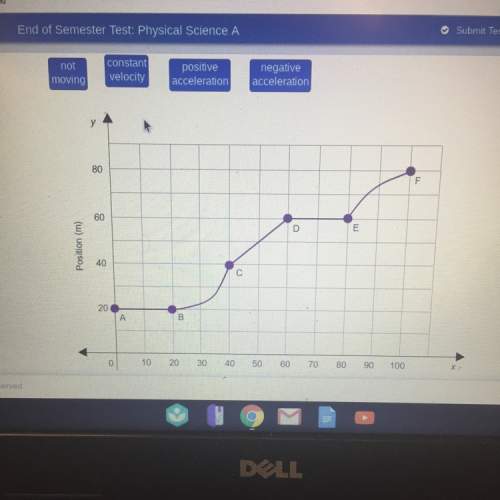
Physics, 11.04.2020 01:55 terryonsavage543
The net charge difference across the membrane, just like the charge difference across the plates of a capacitor, is what leads to the voltage across the membrane. How much excess charge (in picocoulombs, where 1 pc = 1x10-12 C) must lie on either side of the membrane of an axon of length 2 cm to provide this potential difference (0.07 V) across the membrane? You may consider that a net positive charge with this value lies just outside the axon cell wall, and a negative charge with this value lies just inside cell wall, like the equal and opposite charges on capacitor plates. Previous Info:An average cylindrical axon has a cell wall that is d = 5 × 10 − 9 m thick and has a radius r = 5 × 10 − 6 m. The dielectric constant of the lipid bilayer κ = 7. Find the capacitance then of the axon cell wall membrane for an axon of length 4 cm. You may consider the cell membrane as having the geometry of a parallel plate capacitor by unrolling the cylinder, which yields parallel capacitor plates with an area A = 2 π r l where l = 1.0 cm is the length of the axon. Give your answer to the nearest nanofarad where 1 nanofarad = 1x10-9 F.

Answers: 1


Another question on Physics

Physics, 22.06.2019 01:30
Afigure skater is rotating at a rate of 200 revolutions per minute. what is the angular speed, in units of rad/s? 20.9 12000 200 3.33
Answers: 2

Physics, 22.06.2019 02:10
Astudent is performing an experiment comparing sound and light waves. the student gathers the following data. what conclusion does the student most likely make based on this data? light waves always travel the same speed; however, the speed of sound is determined by the medium that it travels through. all sound waves always have the same energy, so the temperature of the medium does not affect wave speed. light needs to vibrate particles, so it travels fastest in tightly packed solids, while sound does not need a medium, so it travels fastest in a gas. tightly packed particles in solids slow down the light waves; however, sound waves make particles bounce into each other, so they travel faster in solids.
Answers: 3

Physics, 22.06.2019 06:40
How does the kinetic energy of a charge change as the charge moves under the effect of an electric field from higher potential to lower potential? a.the kinetic energy increases.b.the kinetic energy decreases.c.the kinetic energy remains the same.d.the kinetic energy is always zero.
Answers: 1

Physics, 22.06.2019 13:50
The magnitude of the poynting vector of a planar electromagnetic wave has an average value of 0.939 w/m^2 . the wave is incident upon a rectangular area, 1.5 m by 2.0 m, at right angles. how much total electromagnetic energy falls on the area during 1.0 minute?
Answers: 2
You know the right answer?
The net charge difference across the membrane, just like the charge difference across the plates of...
Questions


Mathematics, 17.12.2020 21:30


Mathematics, 17.12.2020 21:30




Mathematics, 17.12.2020 21:30






Mathematics, 17.12.2020 21:30


Law, 17.12.2020 21:30

Mathematics, 17.12.2020 21:30

Mathematics, 17.12.2020 21:30

Mathematics, 17.12.2020 21:30




